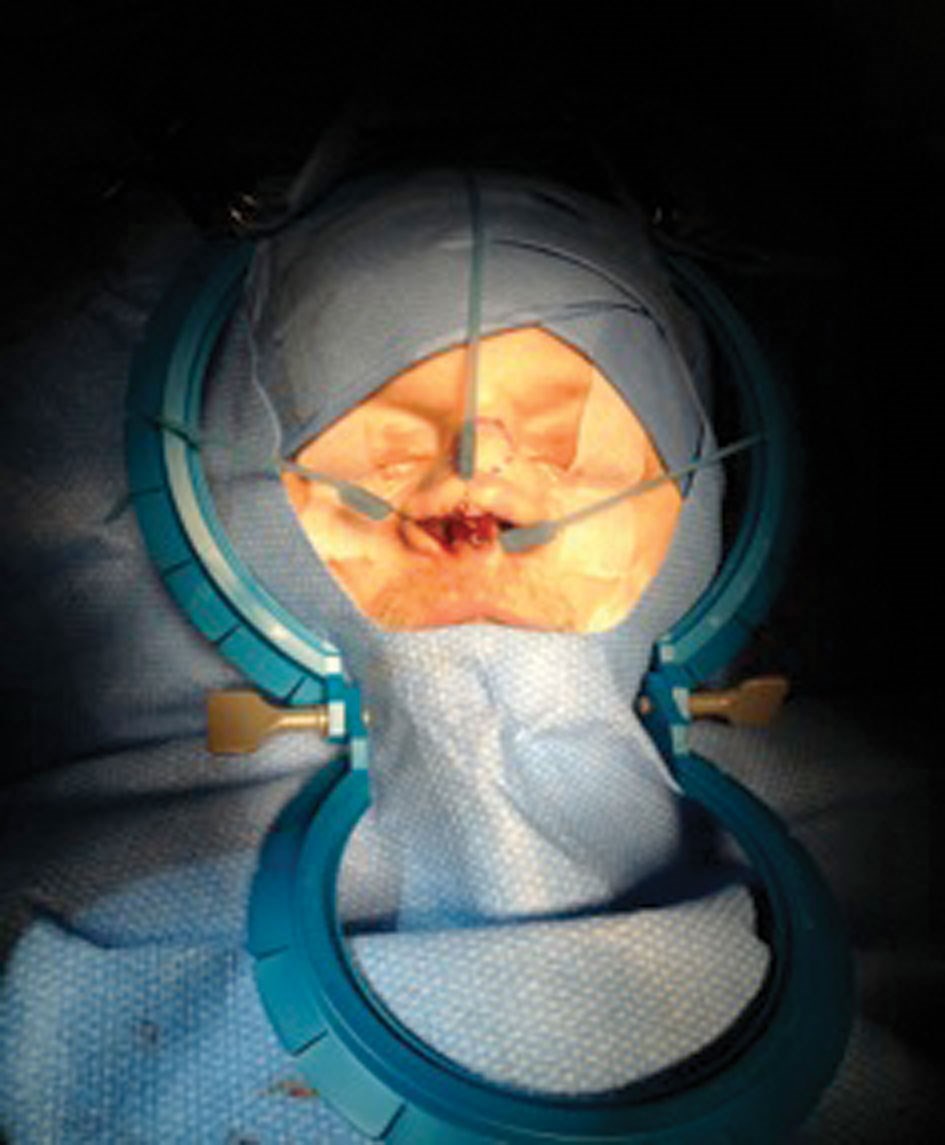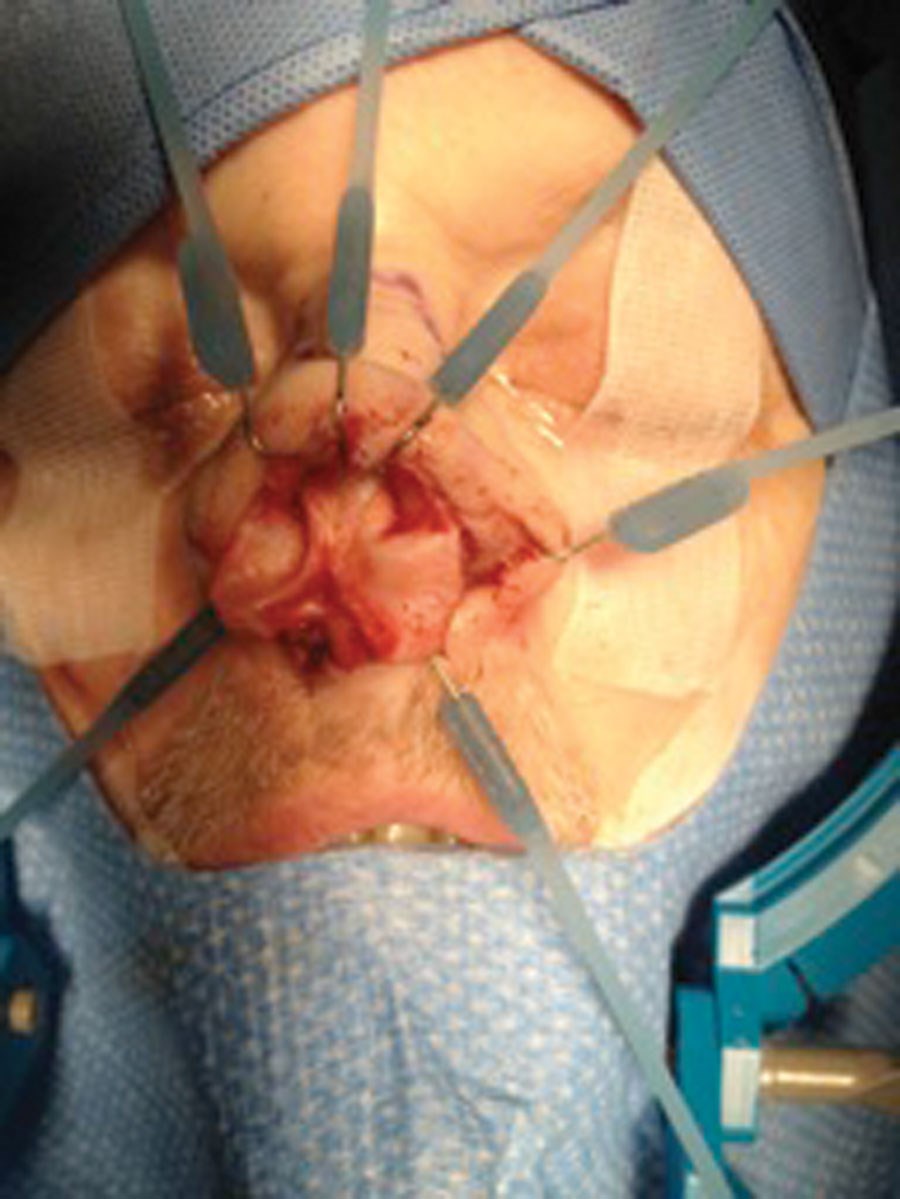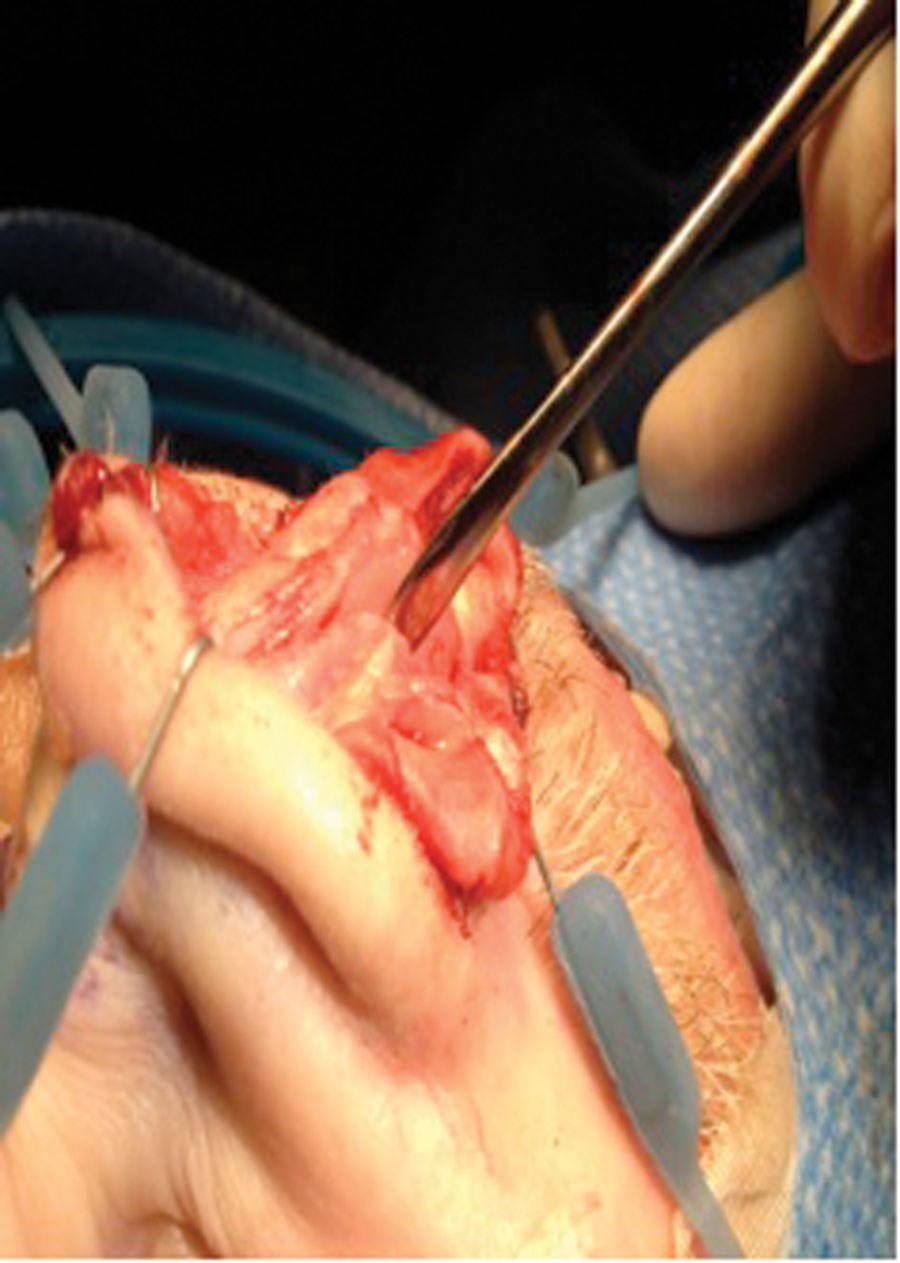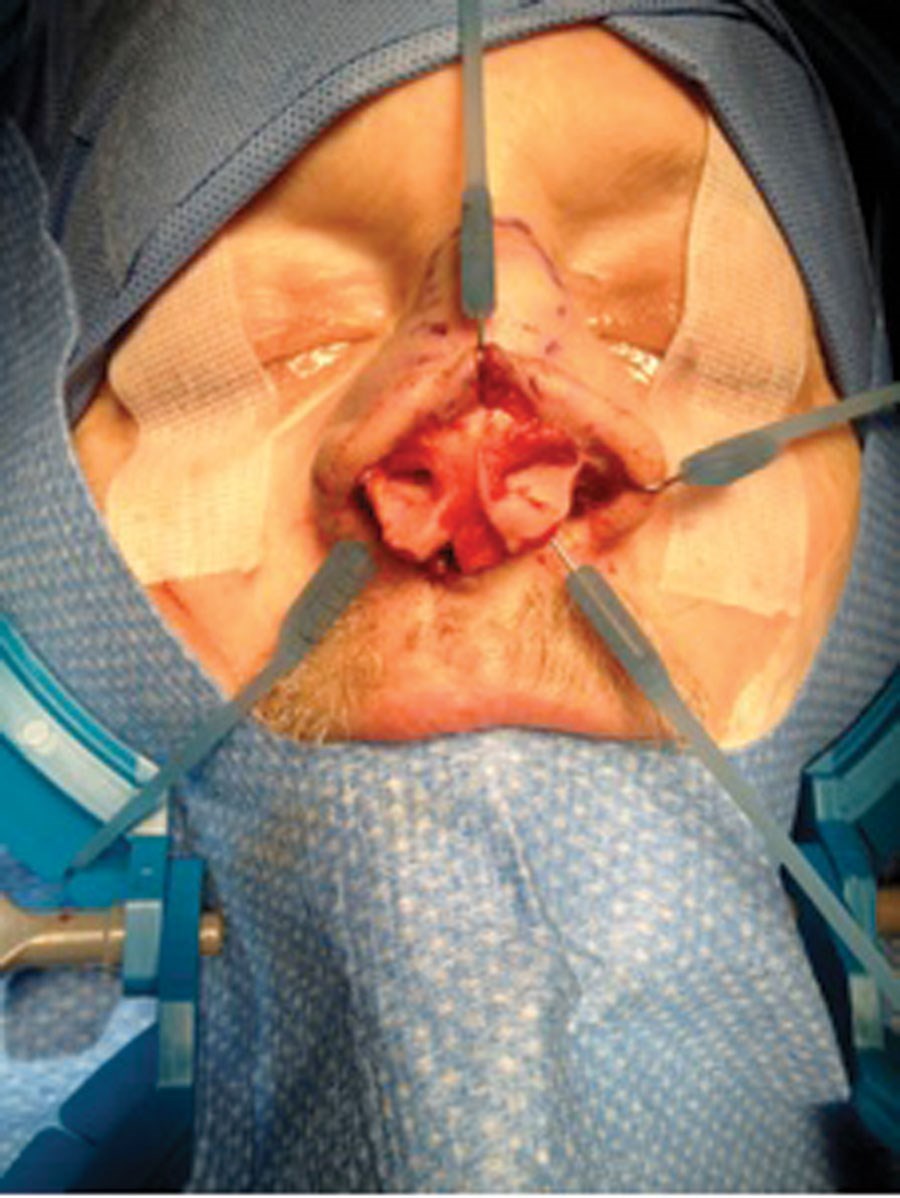Introduction
Good exposure is an essential requisite in open rhinoplasty and often requires appropriate assistance to aid surgery. Frequently, surgeons lack adequate assistance in theatre and often have to depend on the scrub nurse for retraction. A self-retaining retractor is ideal to overcome these problems. Here, we describe our experience in using elasticated hooks in open rhinoplasty.
Technique
Standard facial preparation is made as for open rhinoplasty. The retractor ring is placed over the facial contour and stabilised with towel clips (Figure 1).

Figure 1: Retractor ring set on face.
Columellar flap
Trans-collumella incision and marginal incisions are made. We routinely use an inverted ‘V’ or ‘W’ incision over the collumella, depending on the width. The collumellar flap is elevated with sharp dissection scissors and a single elasticated hook is applied to retract the collumella flap (Figure 2). Counter traction is achieved by inserting the stays into the slots of the retractor ring in opposing quadrants. As the collumellar flap is elevated the tension over the elasticated hook may be modified by adjusting the counter traction stay over the retractor ring. In situations where the collumella flap is wide, a two pronged elasticated hook may be used. In theory there is a small risk of tear to the skin overlying the collumella flap but no such complications were observed in our case series.

Figure 2: Collumellar stay.
Lateral crus dissection
Once the collumella flap is elevated, the medial crus is carefully dissected and continued over the domes of both the lower lateral cartilage. A three point retraction technique is used for dissection of the lateral crus. Three elasticated hooks are placed over the collumella, medial crus and marginal incision respectively (Figure 3) with counter traction over the slots in the retractable ring. This aligns the lateral crus into a straight line for optimal dissection. The hooks and retraction allow adequate exposure and facilitate optimal handling of the tissues without undue tension or any unnecessary tears to the skin. In some cases, the domes can be pulled down, by placing an elasticated hook under the ipsilateral dome for better exposure and visualisation of the lateral crus.

Figure 3: Three-point traction.
Mid dorsum exposure
Once medial and lateral crus are dissected and exposed, superficial musculoaponeurotic system (SMAS) elevation is continued over the nasal dorsum and retractors are repositioned over the central dorsal flap. The domes are kept pulled down, with the elasticated hooks under the domes. Sub-perichondrial dissection is continued over the nasal dorsum and wide exposure of the dorsum achieved (Figure 4).
Figure 4: Mid dorsal exposure.
Anterior septal dissection
Two elasticated hooks are repositioned over the medial surface of the medial crus and retracted laterally to achieve optimal exposure of the caudal septum. The inter-crural ligament is divided, the caudal septum is exposed down to the nasal spine, and bilateral mucoperichondrial flaps are elevated (Figure 5). Where appropriate, the caudal septum can be stabilised to the nasal spine with 3-0 Ethilon.


Figure 5: (top and bottom) Anterior septal dissection.
Conclusion
The Lone Star retractor system of elasticated hooks is a flexible tool with the ability to rapidly adapt to changes in the field with minimal effort during the surgical procedure, offering optimal visibility and access to a surgical site. It also helps to free up personnel to perform other valuable duties. No complications such as tear to skin flap, or cartilage were observed in our series of patients. Caution should be exercised when applying the counterattraction.
Further reading
1. http://www.medline.com/media
/assets/pdf/ReeTrakt_Prolapse.pdf
2. http://www.appliedmedical.com/
Resources/Alexis/Literature/Alexis_Surgical_Products.pdf







